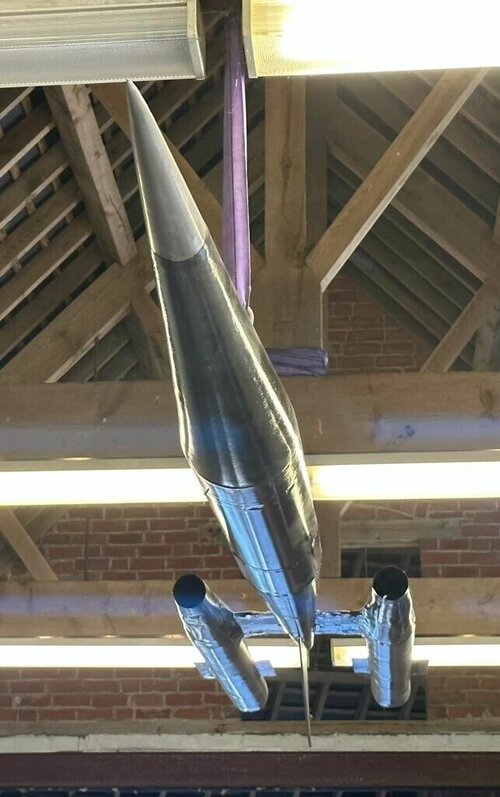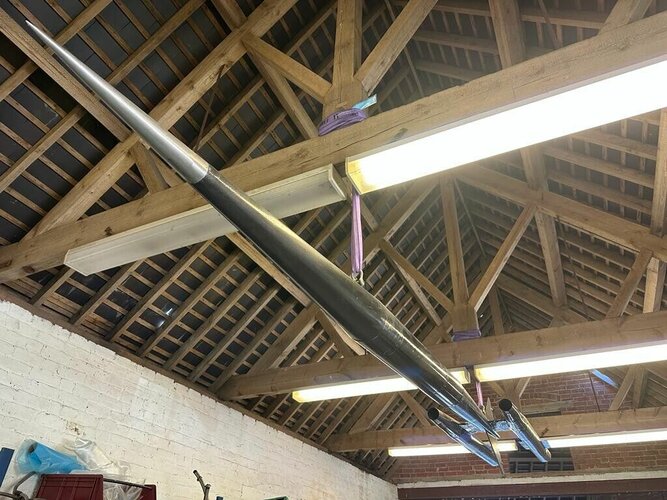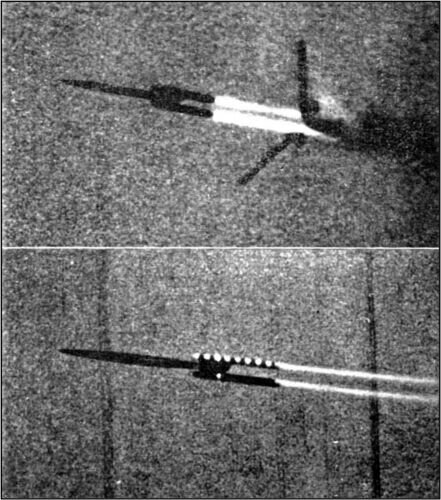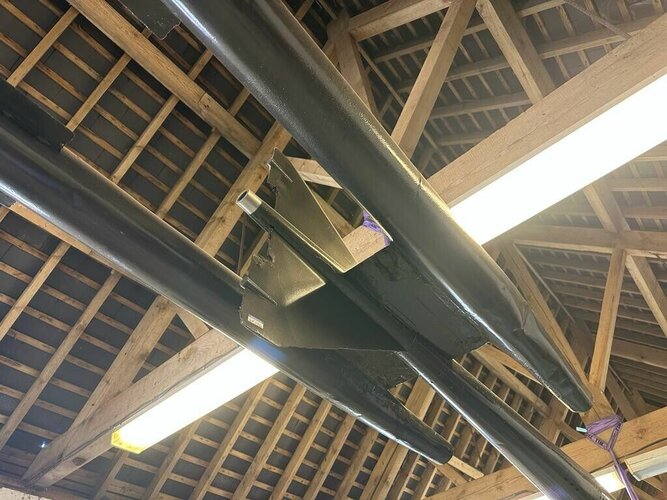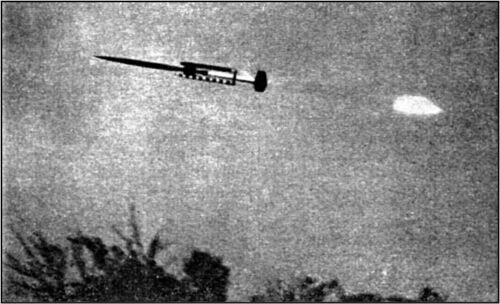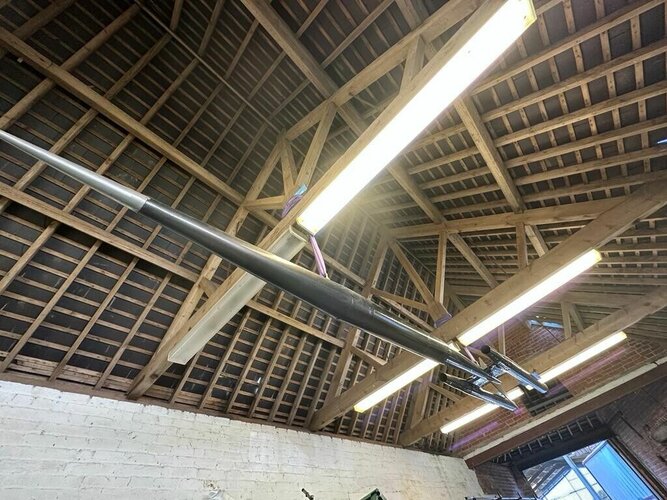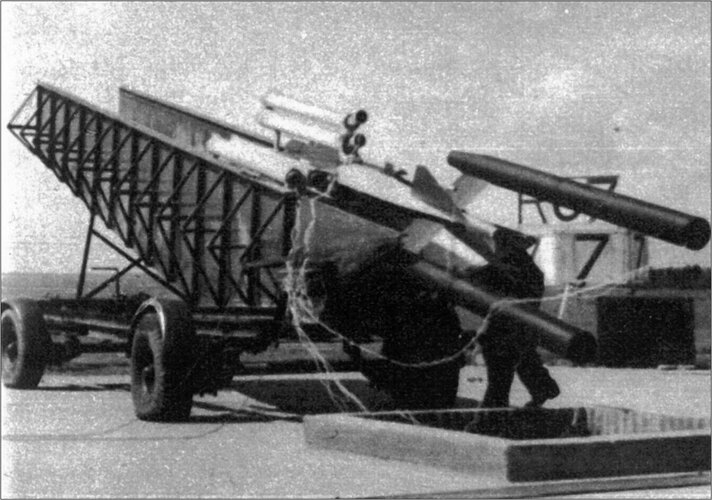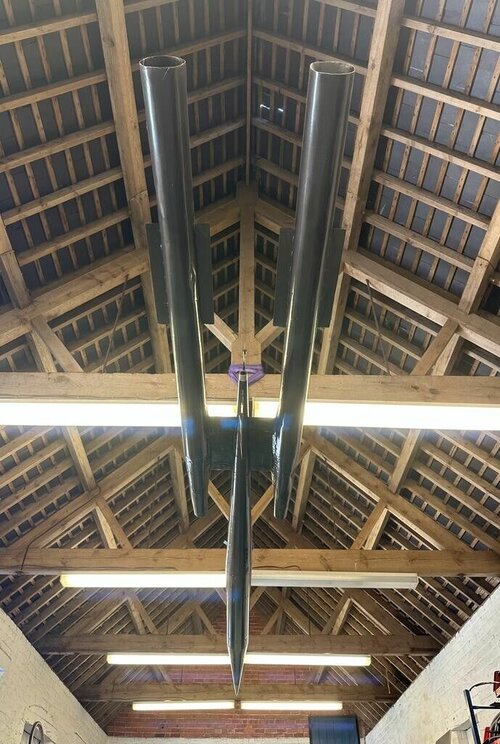Whereas all missile project studies in the UK had so far been limited to ramjets no larger than 10" diameter, which meant that 4 engines were required for sufficient performance, it was now possible to consider much more practical two-engine layouts. By the end of 1950 the twin-engine concept was hardening, with requirements for ramjets of between 14" and 16" diameter. Project work done on test-bed air supplies and rigs confirmed that this size of engine could be accommodated at Bristol. To gain advantage from the practical experience available in the USA, a technical exchange agreement was negotiated with the Boeing Airplane Company of Seattle who had been assessing similar ramjets in missile definition work for the US Army. This definition programme had achieved a significant number of successful flights with ramjets of the required size, so the UK objective of getting confidence in the potential capability of large ramjets was met.
Arrangements were completed for a four-man team led by Nedham to visit Boeing in late January 1951. Early in that month Hooker decided that RRJ should join this team, and a highly successful period of some seven weeks was spent completing the project design of a 16" flight engine and detailing an ‘Iron Horse’ rig version of the engine. This latter was manufactured and sent to Seattle for testing in May. RRJ and Nedham went on to visit Marquardt, who were building on their work for the larger and higher Mach-number ramjets for the long range, surface-to-air Bomarc missile. They also called at the Applied Physics Laboratory of Johns Hopkins University in Washington to see the Project Managers of Talos, a surface-to-air missile with a single ramjet integrated into the main body.
Return to Bristol was not until April and, in May, RRJ was appointed in charge of ramjets, bringing with him from the company research department key people on supersonics and combustion. Nedham stayed on as his deputy and remained in charge of ramjet development.
The work on the combustor and fuel control for the RAE ramjet test vehicle programme, the JTV (Jet Test Vehicle), was of great help in building up all aspects of the ramjet team, including flight preparation and analysis. A number of problems of light-up and combustion stability in sustained flight were dealt with, leading to a first successful ramjet-powered supersonic flight in July 1951. The JTV programme was completed in mid 1952.



